Transcript
Biomimicry: Innovation inspired by nature
Hi! Alex here. What is biomimicry? Bio means life; mimicry means imitate. So biomimicry is the practice of imitating life. biomimicry looks to Nature to provide inspiration and direction to sustainably solve our most pressing challenges; it’s innovation inspired by nature.
Human beings are clever. We’ve created cities, economies, and whole societies… but at the same time and without meaning to, we’ve also created massive sustainability challenges for future generations and ourselves. Biomimicry is a way to address these problems by creating policies, products and processes that are adapted to life on earth. The idea goes like this:
Plants, animals and microbes are amazing. They have spent billions of years engineering and testing ways to thrive on the planet. 3.8 billion years, to be precise. That’s a lot of research and development! After all this R&D, what didn’t work doesn’t exist anymore, and what surrounds us has learned to survive. Solutions to challenges large and small are all around us – we just need to look. Here are two examples.
Sustainable energy provision is a massive sustainability challenge. The race is on to find economically viable sustainable energy solutions. Biomimicry asks, “What could we learn from Nature that could help us produce sustainable energy, or make more efficient the current alternative technologies that are already out there?”
Seemingly large and unwieldy, humpback whales display surprising agility in the water. This is due mainly to their flippers, which have large, irregular bumps called tubercles across their leading edges. Inspired by these flippers, a company called WhalePower has developed turbine blades – with bumps called tubercles on the leading edge. These blades promise greater efficiency in many applications, from wind turbines to hydroelectric turbines, to irrigation pumps to ventilation fans. In fact, using these blades to catch wind could provide up to 20% increased efficiency, making this type of alternative energy competitive with other energy sources. Thank you, humpback whales! Here’s another example of biomimicry in action.
The Shinkansen bullet train is one of the fastest trains in the world. Offering high-speed travel between several of Japan’s metropolitan areas, it used to travel over 200 miles per hour. But, every time the train emerged from a tunnel air pressure changes made a sonic boom, like a large thunderclap, causing people one-quarter mile away who lived along the train line to complain. Japan has strict noise pollution laws, so this had to be solved. The train’s chief engineer was a dedicated bird-watcher. He asked himself, “Is there something in Nature that travels quickly and smoothly between two different mediums?” The kingfisher dives from the air into water to catch fish and produces almost no splash at all compared to similar sized-birds or animals. Modelling the front end of the train after the beak of kingfishers resulted in a quieter train, one that uses 15% less electricity while travelling 10% faster. By emulating Nature, the bullet train designers were able to able to solve an important problem.
Imagine what other problems might be solved by turning to the world around us and asking, “What would Nature do?”
Check out www.biomimicry.org and www.asknature.org to learn more about this exciting practice of innovation inspired by nature, as well as stories and examples.
If you found it useful please subscribe. You can also find all our sustainability videos on our website sustainabilityillustrated.com.
You can help us make more videos so people can learn about sustainability for free by contributing the amount of your choice on the Patreon page by clicking on the orange button. Thank you to all our patrons and thank you for watching.


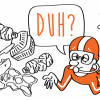

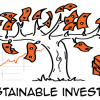
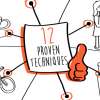
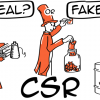
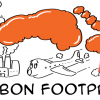
Check this out! The Darwin’s Bark Spider shoots 25-metre web: https://youtu.be/nlRkwuAcUd4 What can we learn from this? Maybe we don’t steel and other building materials we use today as much as we think 🙂